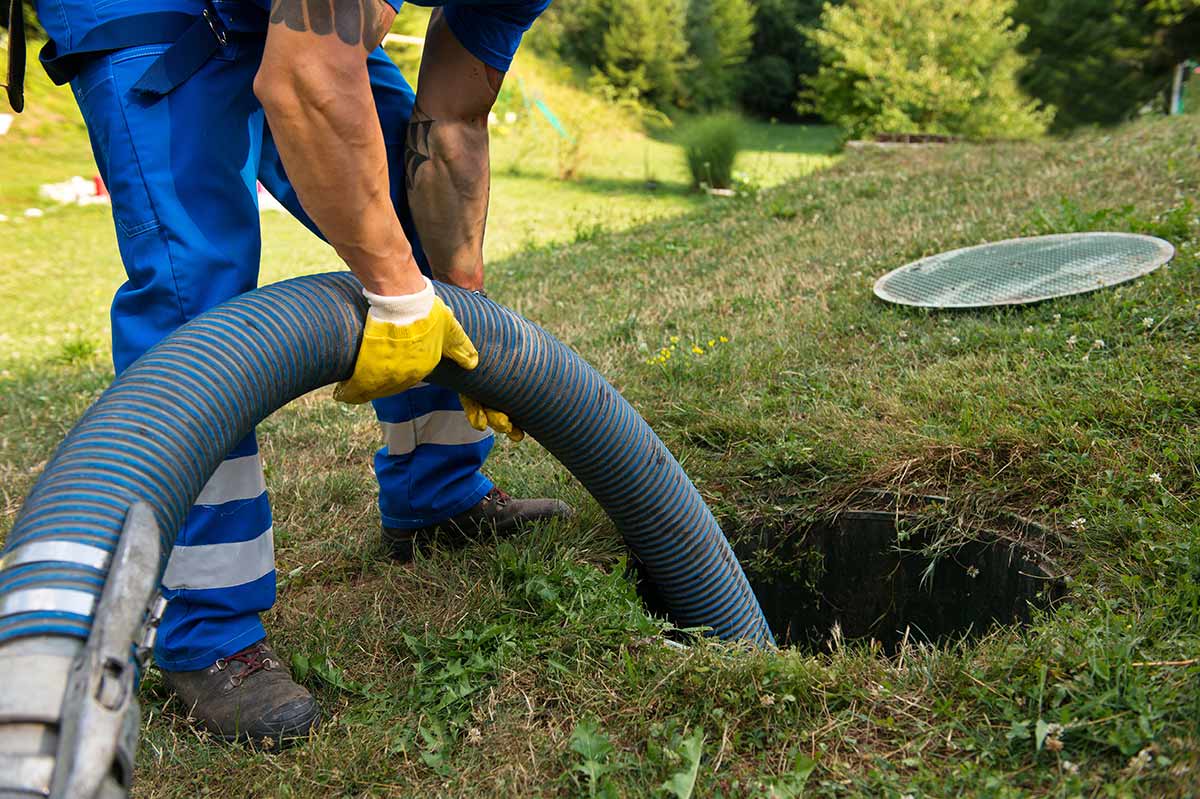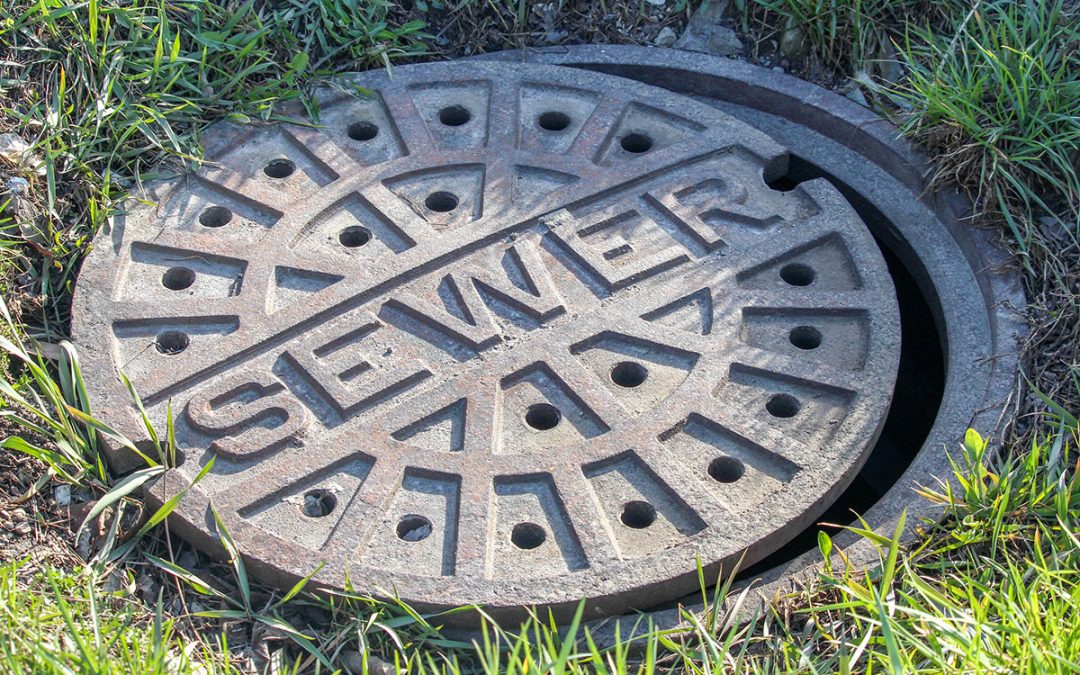If you live in a house or apartment built after 1990, chances are you don’t have a septic tank. And if you do, you might want to consider converting it to a sewer system.
A septic tank is basically a large container buried underground that collects wastewater from sinks, showers, toilets, etc. The wastewater then flows into a leach field where it percolates through soil until it reaches groundwater.
This is usually considered safe because the water eventually makes its way to a treatment plant. However, if you live in a newer property, you probably have a sewer system instead of a septic tank.
Sewer systems are connected pipes that carry wastewater directly to a treatment plant. They’re typically less expensive than septic tanks, but they require regular maintenance.
How Much Does It Cost To Convert A Septic Tank To A Sewer System?
There are many factors that determine how much it will cost to convert a septic tank to a sewer system. These include:
- Size of your property
- Type of plumbing used
- Number of fixtures on your property
- Location of the property
- Existing drainage issues
- Amount of excavation required
- Water pressure available
- Any special considerations for your area
Most homeowners don’t realize that their local municipality has different rules regarding septic tanks and sewer systems.
For example, some municipalities allow you to use a septic tank as long as it meets certain requirements while others only allow you to use a sewer system.
Some cities even require that all properties be upgraded to a sewer system by a specific date. So if you plan on selling your home soon, you should check with your city about any possible upgrades.
You may also want to ask your city whether there are any incentives for upgrading your system. Some cities offer financial assistance to those who choose to upgrade to a sewer system.
In addition, some cities offer grants to help pay for the installation of a new sewer system. If you live in an older neighborhood, you may not have to worry too much about finding a plumbing contractor who specializes in installing septic tanks.
But if you live in a newer neighborhood, you’ll likely have to find someone who specializes in sewer line repair and converting septic tanks to sewer systems.
If you do end up finding a plumber, make sure he/she is licensed and insured. Also, make sure the contractor uses quality materials and equipment during the project.
What Is The Difference Between A Septic Tank And A Sewer Line?
A septic tank is basically a container that holds water until it becomes saturated. This allows bacteria to break down human waste into harmless substances. When the tank gets full, it needs to be emptied or pumped out.
A sewer line is a pipe that carries sewage away from your house. Most homes have a main sewer line that runs through the middle of the property.
Each fixture (toilet, sink, etc.) drains into its own branch line which leads directly to the main sewer line.
The difference between a septic tank and a sewer line is that a septic tank is designed to hold only one toilet, whereas a sewer line can handle multiple toilets.
Do I Need Permits To Convert From A Septic Tank To A Sewer System?
In many cases, your local government requires permits before they issue permission to convert from a septic tank to a sewer system. These permits include:
- Building permit – Your building inspector will require a building permit when you start construction on your home. He/she will inspect the site and determine whether the structure meets all requirements.
- Plumbing permit – Before starting the plumbing portion of your project, you’ll need a plumbing permit. In some states, you’ll also need a plumbing license.
- Stormwater permit – Some municipalities require a stormwater permit for projects that involve adding a new drainage system.
- Zoning permit – Depending on where you live, you may need a zoning permit to add a new drainage system. For example, if you are adding a new septic tank or a new sewer line, you will need to get approval from your city council.
If you don’t have these permits yet, contact your local government agency to find out which permits you require before the conversion.
Six Reasons To Convert From Septic To Sewer
Reduce Water Bills
A septic system uses more than twice as much water as a conventional toilet system. If you’re concerned about your water bill, then consider switching to a sewer system.
Protect Our Environment
Septic tanks release harmful chemicals into the environment. When they decompose, they produce methane gas, which contributes to global warming.
Save Space
Septic systems take up a lot of room. Converting to a sewer system will free up valuable living space.
Improve Your Home Value
If you plan to sell your home, then you’ll want to make sure that it has a working sewer system. Otherwise, potential buyers might think that the home isn’t clean enough for them to live in.
Increase Safety
If your home floods, then you could face serious health risks. With a sewer system, this risk is eliminated.
Avoid Potential Health Problems
Septic systems aren’t always properly maintained. In fact, some studies have shown that people who use septic systems are at higher risk of developing certain types of cancer. covert to sewer systems and you’ll never have to doa messy septic tank pump out again!

Sewer Line Installation Cost Vs Septic Tank Cost
When comparing the cost of installing a septic tank versus a sewer line, keep in mind that the installation costs for both systems are different. The total cost of a septic tank installation includes the following:
- Pumping – You’ll likely need to pump the contents of your septic tank at least once every five years.
- Drain field – You’ll need to dig a trench around your drain field and lay down pipes so that the liquid flows properly.
- Backfill – You’ll also need to backfill the area around your septic tank.
These costs vary depending on how big your septic tank is and how much material you use during the process.
On average, the cost of installing a sewer line ranges between $2,000 and $4,500. If you want to install a new septic tank, expect to spend about $1,200.
Sewer Conversion Cost
Converting from a septic system to a sewer system is not cheap. In fact, it costs about $1,000 to convert from a septic system (a septic tank and a drainfield) to a sewer line.
This cost includes the installation of a new septic tank, a new drainfield, a new sewage treatment plant, and the installation of a new sewer line.
A typical home with a septic tank and a small drainfield would have a total septic system cost of about $5,500-$6,000. A typical home with a larger drainfield would have a septic system cost of around $10,000-$12,000.
In addition, there are additional charges if you want to use a private well instead of a municipal water supply.
In some cases, you may be able to save money by converting from a septic tank to a sewer system yourself. For example, if you live near a city or town that offers free sewer service, you might be eligible to receive a rebate for installing a sewer system.
Also, if you already own a home with a septic system, you may qualify for a loan through your local bank. This way, you don’t have to pay upfront for the construction of a new sewer system.
How Long Does It Take To Convert From Septic To Sewer?
The process of converting from a septic system depends on how much work needs to be done. The more extensive the job, the longer it takes.
For example, if all you need to do is dig out the old septic tank and replace it with a new one, it should only take a few days.
On the other hand, if you need to install a new septic tank and a new drainfield as well as a new sewage treatment plant and a new sewer line, it could take several months.
What Are Some Common Problems With Septic Systems?
One common problem with septic systems is that they often fail during heavy rains or snowstorms.
When this happens, the ground beneath your house becomes saturated and the leach field cannot absorb enough wastewater.
As a result, the excess wastewater backs up into your basement or crawl space.
Another common issue with septic tanks is that they become clogged over time. This causes the tank to overflow when it rains. It’s important to regularly clean out your septic tank and drainfield to prevent these issues.
If you find that your septic tank has overflowed or backed up, contact your local municipality for help. They’ll probably recommend that you call a professional septic contractor who will come out and fix the issue.
If you’re looking to buy a home with a septic system, check with your realtor or mortgage lender to see if you qualify for any rebates or loans.
Conclusion
Converting from a septic system can be expensive. However, if you plan ahead and budget properly, you can save money in the long term.
Remember: A septic system is just a temporary solution until you get a permanent sewer connection installed.
If you’re planning on selling your home within five years, then you may want to consider converting to a sewer system before you put your home on the market.
This way, you won’t have to worry about showing off a septic system while trying to sell your home. Instead, you can focus on making sure that your home sells quickly and easily.
Sewage disposal is an essential part of modern life. If you’re thinking about converting to a sewer system, then you should know what you’ll need to do beforehand. By following our guide, you’ll ensure that you have everything covered. Need help? Your search for a pro is already done for you. Hayward CA, Salem NH, Waldorf MD, Worcester MA and Poughkeepsie NY are just some of the locations served by Best Plumbers Club members. So why not reach out for a free quote today?







